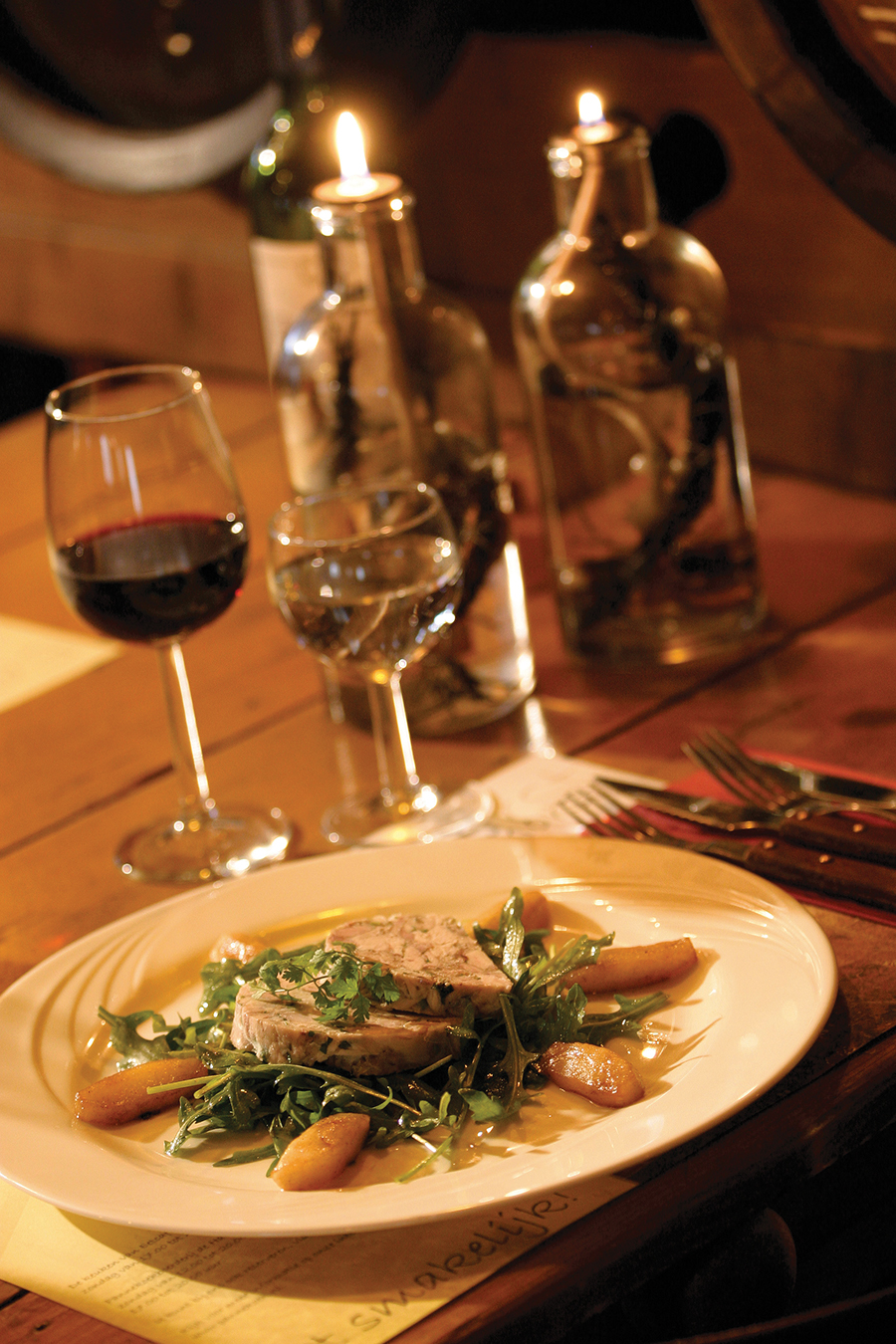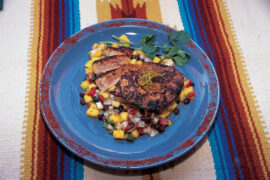By Matthew DeBord
HQ 55 | SPRING 2005
If there’s one activity that tends to intimidate even experienced wine drinkers it is using the beverage in a culinary context. But really, there’s nothing to cooking with wine. It’s as easy as boiling water. Actually, it’s easier, since you don’t need as much wine to cook as you do water to, say, make spaghetti.
There’s only one hard-and-fast rule to observe when cooking with wine: Don’t be cheap. When used for cooking, wine becomes an ingredient, and any cook worth his or her … er, salt (sorry, bad pun) will tell you that the secret to good cooking is start with good raw materials. Of course, you don’t need to spend a lot on the wine you plan to cook with. But with so many superb wines out there in the $7 – $10 range, you shouldn’t even feel tempted. The basic principal is this: If you wouldn’t want to drink it on its own, don’t cook with it.
I recommend finding a basic, everyday red and a basic, everyday white, and to use both for drinking and cooking. You’ll use the white more often. A simple, fruity Chardonnay that’s not too oaky is perfect; look for examples from Australia and California. On the red front, Merlot is fine.
OK, so now that you’ve got some wine to cook with … what are you going to cook? Well, you might as well learn a rudimentary culinary technique along the way, so here goes. Get yourself two boned, skinless chicken breasts. Clean them and season with salt and pepper. Preheat your oven to 425 F. Chop four cloves of garlic. Heat up some olive oil and butter in a skillet – a small amount, over high heat. When the butter begins to foam, add the chicken and reduce the heat slightly. Brown the chicken on both sides. Once a golden color develops on the outside, transfer the skillet to the oven (make sure there’s no plastic – that it’s oven-safe). Cook the chicken until it’s safe to eat, probably about 10-15 minutes (cut a breast in half to check for doneness, and for juices that run clear). Transfer the chicken to a platter and allow it to rest for a 5-10 minutes juices will run out). Now return the skillet to medium heat on the stove. There should be little bits and pieces of chicken stuck to the pan. Toss in the garlic and saute until golden.
Now, what you want to do is unstick everything that’s stuck to the skillet. That’s where the wine comes in. This is a technique called deglazing. It’s the most basic culinary skill one can acquire for making a quick sauce. Add about half a cup of your dry, white, everyday wine, to the hot pan. It will sizzle and froth and steam. Whatever alcohol is in the wine will rapidly cook off, leaving behind only the fruit-juice part of the wine. With a wooden spoon, work the bits of chicken loose, until the bottom of the skillet is clean.
What you want to do now is reduce the sauce, until it thickens slightly. This should occur when the wine is reduced by about half. Return the chicken breasts to the skillet, along with the drippings they have made while resting. Baste them with the garlic-wine sauce. Plate the breasts and pour the sauce over top of them. Presto! Chicken with a garlic-wine sauce!
And just like that, you’re cooking with wine.
You can use red wine in almost exactly the same way. Get a steak, season it with salt, pepper and olive oil. Pop it into a nice hot skillet. Let it sear and pop and smoke on both sides for a minute or so per side, then place it in a 450ºF oven until it’s medium rare. Remove, set aside, and allow to rest. Chop up half an onion and fry it in the pan, until the onion is browned lightly. Now pour in a cup of dry red wine, to deglaze. Reduce the wine on medium heat until it has thickened, then add a tablespoon or two of butter. If the taste is too strong, you can swirl in some sugar or honey. Return the steak and its drippings to the skillet. Voila! Pan-fried steak with a red-wine sauce.
It really is that easy.
For all practical purposes, you are cooking a piece of meat over heat, and then using the residue of the meat as the starting point for a rich and flavorful sauce.
I should also point out that cooking is a great way to rid oneself of a few leftover ounces of very good wine. Open a jar of Ragu and add the final dregs of the $45 bottle of Cabernet to the sauce. It will definitely bring the sauce up a level. But by and large, I don’t recommend cooking with really good wine. You can do fine with a $7 bottle. However, it often makes sense to drink a wine that’s similar to one you’ve cooked with. If you’ve cooked with Chardonnay, drink Chardonnay with the meal. The wine and the food will get along better.
What exactly does cooking with wine do for the flavor of a dish? Well, it mainly contributes a distinct new layer. It’s like butter: The secret of most restaurant cooking is indeed butter – chefs aren’t afraid of it, and butter does serve to finish recipes, by enriching the dish overall. Wine is the same: It brings a little something extra to the mundane, especially bland foods, such as chicken and some fish. In fact, in countries like France and Italy, it’s rare to see plain, baked chicken or fish, unadorned. There’s almost always a sauce, and it often involves wine.
There are some wines that you should stay away from when cooking. Sweet white wines are not a great idea, unless you want the final product to be sweet. Port and fortified wines can be good, but only for slow-cooked dishes. For the quick stuff, you’ll want to stick to simple, good-quality, dry red and white wines.
Give it a try. Once you’ve started cooking with wine, you might not ever want to stop.





